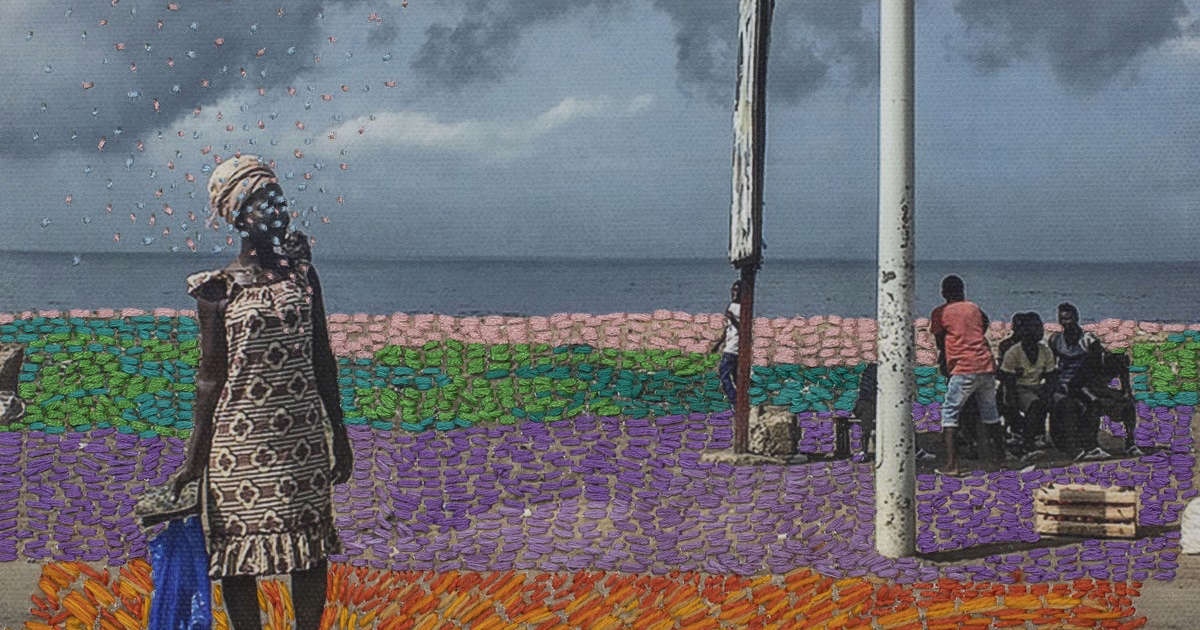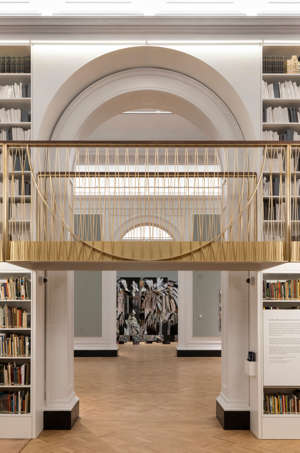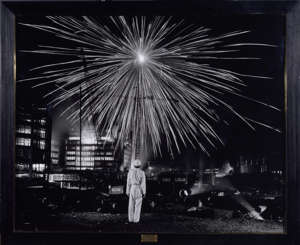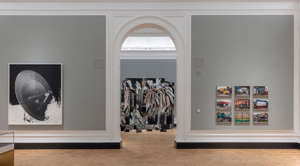[ad_1]
I wouldn’t quite describe the V&A’s photography holdings as a hidden gem in our national collections, but they’re still surprisingly little known to many of us. Part of the problem is the museum’s eclecticism. But also it has never provided space equivalent to that given to sculpture, design, decorative arts, the Raphael Cartoons, and its other world-leading collections. Until now.
The Photography Centre expands the V&A’s photographic galleries from three to seven rooms – adding grand spaces that finally do justice to the riches it’s built up over 170 years. The necessity for the spaces is brought into sharp focus by the fact that even in these expanded displays, it includes just 600 of the – wait for it – 800,000 items in the museum’s photography collection.
The title of the selection in the first two rooms we encounter (which opened in the first phase of the project in 2018), is Energy: Sparks from the Collection – suitably dynamic yet vague enough to allow the curators to encompass a partial history of photography. Some of its big hitters are here, from Henry Fox Talbot and Roger Fenton, through Julia Margaret Cameron, to Eugéne Atget, on to Bernd and Hilla Becher.
© Provided by Evening Standard
Installation view of the completed Photography Centre at the V&A (Victoria and Albert Museum, London)
There are some all-time-great photographs, like Cameron’s portrait of the scientist John Herschel, perhaps the finest example of her aim to record “the greatness of the inner as well as the features of the outer man”, that she said was “almost the embodiment of a prayer”. I’ve seen this image probably hundreds of times but it never ceases to be tremendously moving, thanks to the intensity and fragility of Hershel’s gaze.
Then there’s Henri Cartier-Bresson’s Palermo, Sicily (1972), in which two children giddily push a wheel down the pavement as a hearse lurks in the road behind them. Again, this never doesn’t take one’s breath away. Sunil Janah, the great documenter of Indian independence, is represented by the extraordinary fusion of two negatives reflecting incendiary demonstrations in Calcutta in 1942.
But perhaps the most striking element of Energy is not the greatest hits, but the surprises. As Tate has built (very belatedly) its own impressive photography holdings, one tends to think we go there to find “art photography” in our national collections. But the V&A here confounds that view. I was delighted to see Jo Spence, Rose Finn-Kelcey, Gabriel Orozco and Lorna Simpson – artists among the photographic auteurs and photojournalists.
© Provided by Evening Standard
Big Bang by Brian Griffin, 1986 (© Victoria and Albert Museum)
And that emphasis on the bold and the creative, indeed on the explosion of the very meaning of photography, spills over into the new spaces. First, we’re hit by Jake Elwes’s video works using deepfake and artificial intelligence to create drag performances to tunes by Beyoncé and Bowie among others. Elwest alludes to the social and political biases inherent in AI technology in relation to non-normative identities. AI and photography is a hot topic; Elwes’s project will not be the last work to reflect on it here, I suspect.
Beyond that is a space dedicated to photography and books – unfinished when I saw it, but potentially an important spotlight on this crucial aspect of photographic art. Then, a truly global selection of new V&A acquisitions by contemporary artists, who push photography’s boundaries, while often unpacking its histories.
Paul Mpagi Sepuya connects photography and performance while Noemie Goudal expands its presence beyond the wall into sculptural space. Sammy Baloji explores the colonial and extractive practices inherent in historic anthropological photographs by Hans Himmelheber. And Gauri Gill’s remarkable sequence of images of dwellings made by farmers in Delhi protesting laws threatening their livelihoods, and Vasantha Yogananthan’s contemporary revisiting of the epic Sanskrit text the RÄmÄyaá¹a reflect their medium’s poetic potential, even when deriving from wildly distinct strategies.
© Provided by Evening Standard
Installation view (Victoria and Albert Museum, London)
The argument is clear: photography has huge significance aesthetically and socially. It has never been more universal and diverse. And it needs these handsome new galleries to reflect that.
V&A, from May 25; vam.ac.uk
Register now for one of the Evening Standard’s newsletters. From a daily news briefing to Homes & Property insights, plus lifestyle, going out, offers and more. For the best stories in your inbox, click here.
[ad_2]



